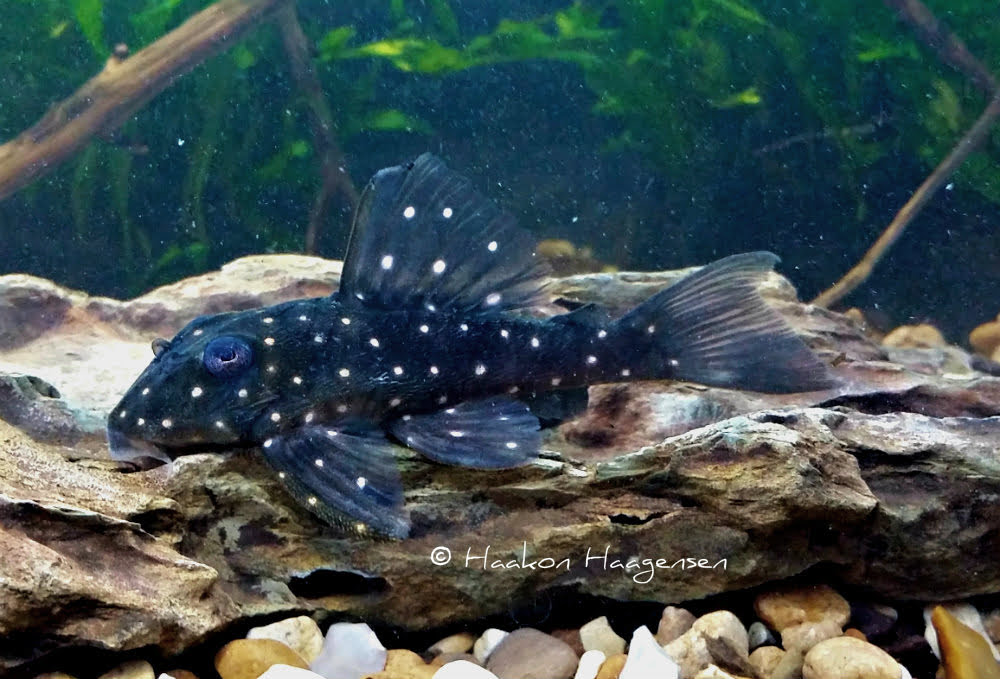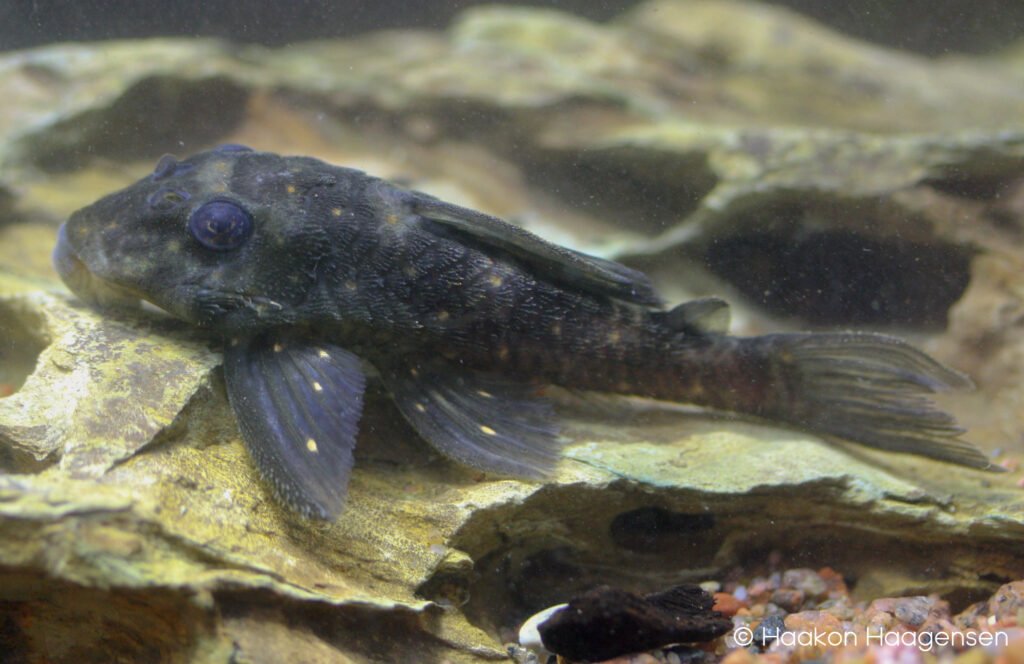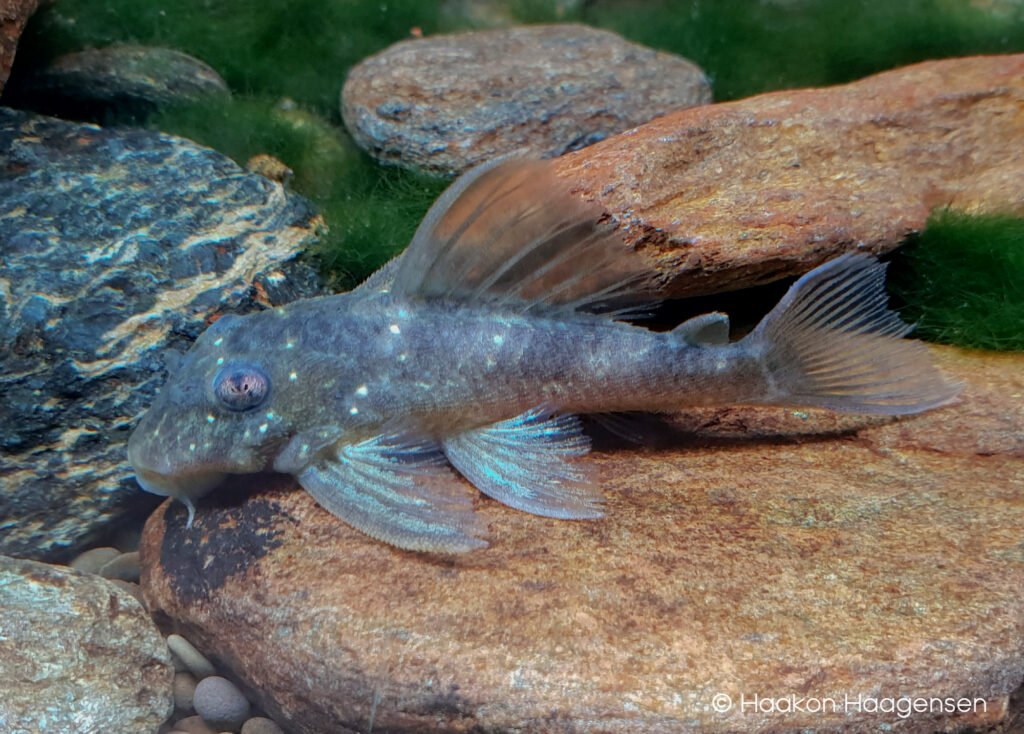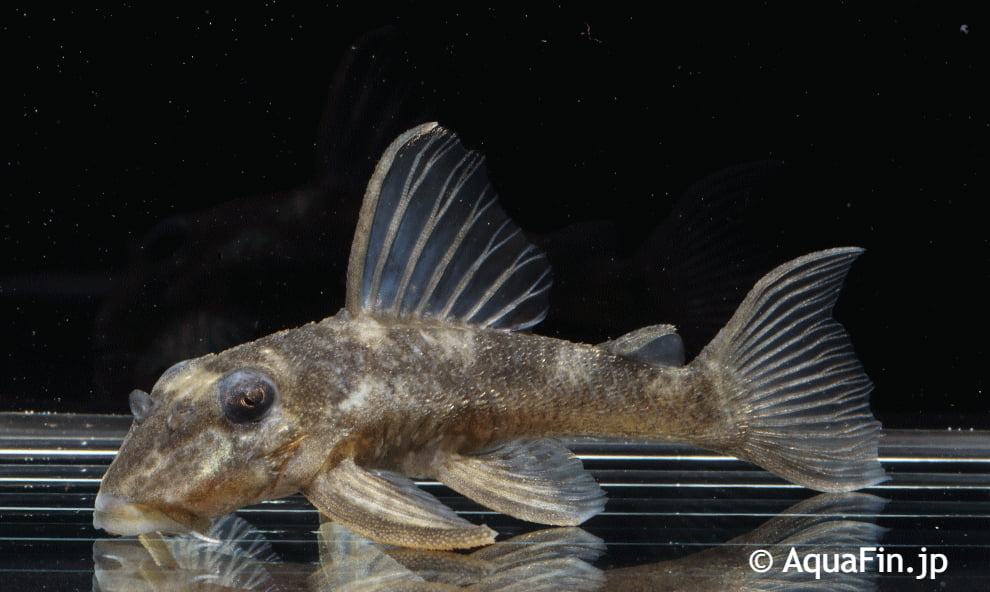







Rio Orinoco is the home to several different forms of Hypancistrus showing a black body covered in white spots, and these are often exported together. This of course is bound to lead to confusion among less experienced aquarists. H.lunaorum, also known as L339, is one of the rarer forms. It seems to have a very limited distribution, and with its very small white spots it’s usually considered the least attractive of the spotted Orinoco forms. Some individuals even lack spots completely.
Facts:
Name: Hypancistrus lunaorum (Armbruster, Lujan & Taphorn, 2007)
Trade names: L339
Origin: Minicia, Rio Gaupuchi, Rio Ventuari, Rio Manapiare, Venezuela.
Maximum size: 14 cm / 6”
H.lunaorum can be separated from H.contradens by having much smaller and fewer white spots. It can be separated from L201 by its bigger adult size.
They need an aquarium set up consisting of lots of hiding places in the form of rocks, wood and of course specially made caves that suit their measurements. In these the males will eventually guard their offspring. They prefer water that is warm (27-30 C), soft and slightly acidic. Most of all it should be well oxygenated and clean, so a good filtration system and frequent water changes are essential. Among themselves they are peaceful, although males may quarrel for caves and females can sometimes be badly injured or even killed during the breeding-trapping in the male’s cave. Males develop longer odontodes on their pectoral fins and on their cheeks and have broader heads. Hypancistrus are mostly carnivorous, so a selection of crustaceans, insect larvae and fish meat should be offered along with high quality dried foods that also contain some vegetable matter.
More info:
